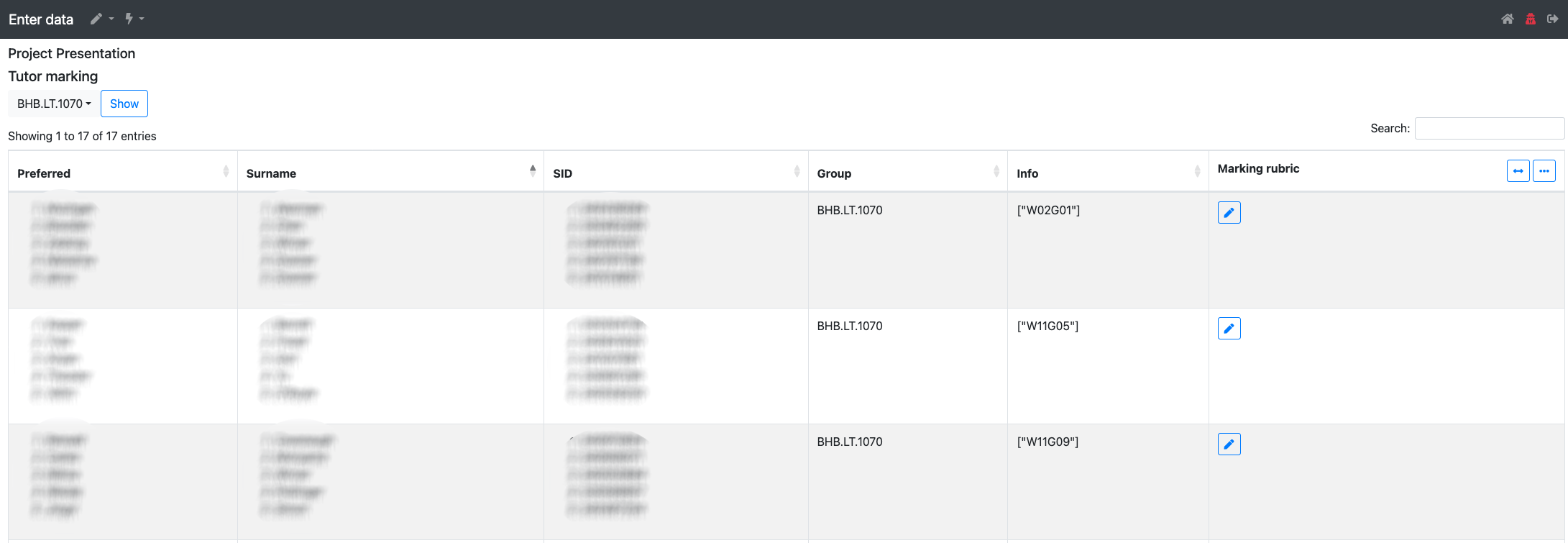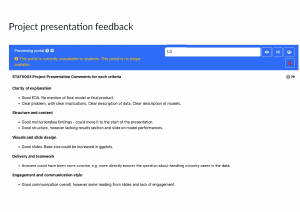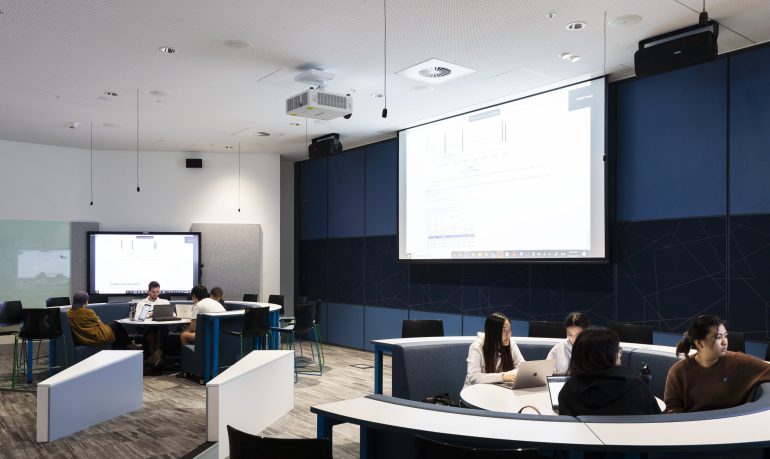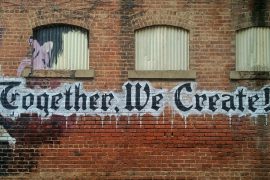As a new hire through the Sydney Education Horizon pathway, I was excited to be exposed to and amazed by the range of university-developed platforms designed to support teaching and learning like the Student Relationship Engagement System, or SRES. I first learned about SRES through conversations with colleagues who had successfully integrated it into their teaching, and I could not wait to explore how it might support my own students. Keen to understand its full potential, I participated in SRES workshops run by the Educational Innovation (EI) team and sought one-on-one consultations with EI staff. These experiences deepened my appreciation of the platform’s flexibility and sparked ideas for its use in managing group work more effectively.
A one-stop shop for marking and feedback
With a record number of student enrolments (~470 students) in a unit that I coordinated in Semester 1 2025, it became essential to establish an efficient and scalable approach to managing group work—ideally, a one-stop platform where tutors could record marks and feedback, and students could engage with the system to reflect on their group experience.
In this unit, group work forms a significant portion of the assessment, which is designed to simulate an end-to-end data investigation process. Students form groups of five within their registered workshops and are encouraged to source their own data problem, define a research question that resonates with them, and engage in data wrangling, exploration and modelling aimed at deriving actionable insights. The project structure offers students flexibility and autonomy, helping foster ownership and creativity in their analysis.
The group work spans multiple deliverables:
- Three graded assessments—a project plan and exploratory data analysis, a group presentation, and a final written report—each requiring tutor evaluation and detailed feedback.
- One non-graded member contribution reflection, submitted individually at the end of the group work, which provides insight into group dynamics and serves as a basis for mark adjustments if necessary.
Drawing on what I had learned—and with the wonderful support of Annie Sadowski, Educational Designer from the School of Mathematics and Statistics, I put these ideas into practice. Together, we designed a bespoke SRES setup tailored to this unit but flexible enough to benefit other medium-to-large units involving group work.
1. Group presentation marking via SRES
Students formed groups of five within their registered workshops, resulting in eight to nine groups per workshop. Group membership was tracked in Canvas and synced to SRES. For the group presentation assessment, two workshops were combined and chaired by their respective tutors, with presentations delivered live or via pre-recordings in booked lecture/seminar rooms separate from their usual classrooms. Both tutors marked the same presentations simultaneously.
While SRES has been widely used for marking, our implementation was unique in handling simultaneous, multi-location presentations. We customised the roll view mode to group all teams presenting in the same venue, allowing tutors to access. This allowed tutors to access only the relevant student groups in their assigned venues, reducing confusion and improving workflow.

Tutors were given direct access to the SRES marking interface with embedded rubrics, eliminating the need to toggle between documents or canvas sites. The marking sheet was also configured to allow dual entry: both tutors could enter scores independently without visibility of each other’s input, preventing accidental overwriting.
2. Feedback portals for students

Since tutors entered marks and comments centrally in SRES, we utilised the system to generate group-specific feedback portals. These were shared with students in a timely manner shortly after the presentations, helping them reflect on their performance and apply the feedback to strengthen their final written reports. USS feedback showed that students appreciated the clarity and relevance of the feedback, which they reported as instrumental in guiding their final submissions.
3. Member contribution review and mark adjustment
Recognising the importance of understanding group dynamics, particularly in group assessments where marks are shared equally, we implemented a non-graded member contribution evaluation form in SRES. Any serious group issues had typically been resolved earlier in the semester so this evaluation ultimately served as reflection on group work.
Each student rated their group members (excluding themselves) on a 5-point scale and provided short comments about their collaborative experience. This data helped the teaching team identify any imbalances in contribution.
Two key columns were generated in SRES:
- The number of reviews received per student
- The average contribution score, used as a basis for potential mark adjustments
In a simple entry column using roll view mode, the coordination team reviewed peer feedback received by each student. To focus on students with lower scores, we applied a regular expression to only show selected students in this view. This gave me the context needed to thoroughly review the rationale for any low ratings and make informed, fair decisions about mark adjustments. Students with an average score of 4 or below were automatically flagged for review, and a simple Yes/No toggle was used to indicate whether a mark adjustment was warranted.

For transparency, we contacted individual students whose marks were adjusted through an SRES filter. This email included a summary of peer comments gathered during the member review. Sharing this information proactively helped students understand why their mark differed from the rest of the group and provided a valuable opportunity for self-reflection. For me, it also reduced the number of post-release enquiries.
Final reflection
This collaborative effort between myself as unit coordinator and my educational design colleagues demonstrates the powerful potential of SRES—as a teaching ally. From simplifying tutor workflows to enabling timely, personalised student feedback and encompassing good pedagogical practices, the system supported the smooth running of a complex group project at scale.
The setup we developed this semester can be readily adapted by other coordinators seeking a structured, transparent, and scalable approach to group work in large cohorts. I hope this reflection encourages more colleagues to explore what’s possible with SRES.
Want to know more?
- Read about how other colleagues use SRES in their teaching
- Come along to an upcoming SRES workshop, scheduled in the lead up to our two main teaching semesters
- Check out the SRES scenario-based tutorial guide for step-by-step guides to using the system





